BMW R 1300 GS Review
They don’t come much more important than this. BMW’s GS is the uber-ADV bike, the steed that started it all a little over 40 years ago. And, like it or not, it’s the bike by which all other large capacity adventure bikes are measured.
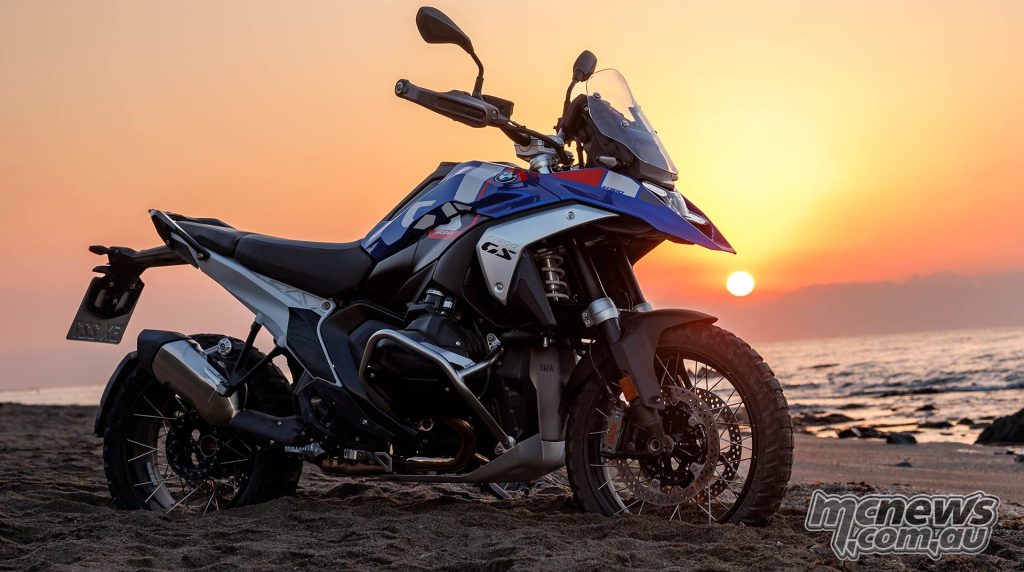
One could argue the modern interpretation of the GS came in 2013 with the debut of the water-boxer. However, this new 1300 is by far a bigger revamp than even that bike was.
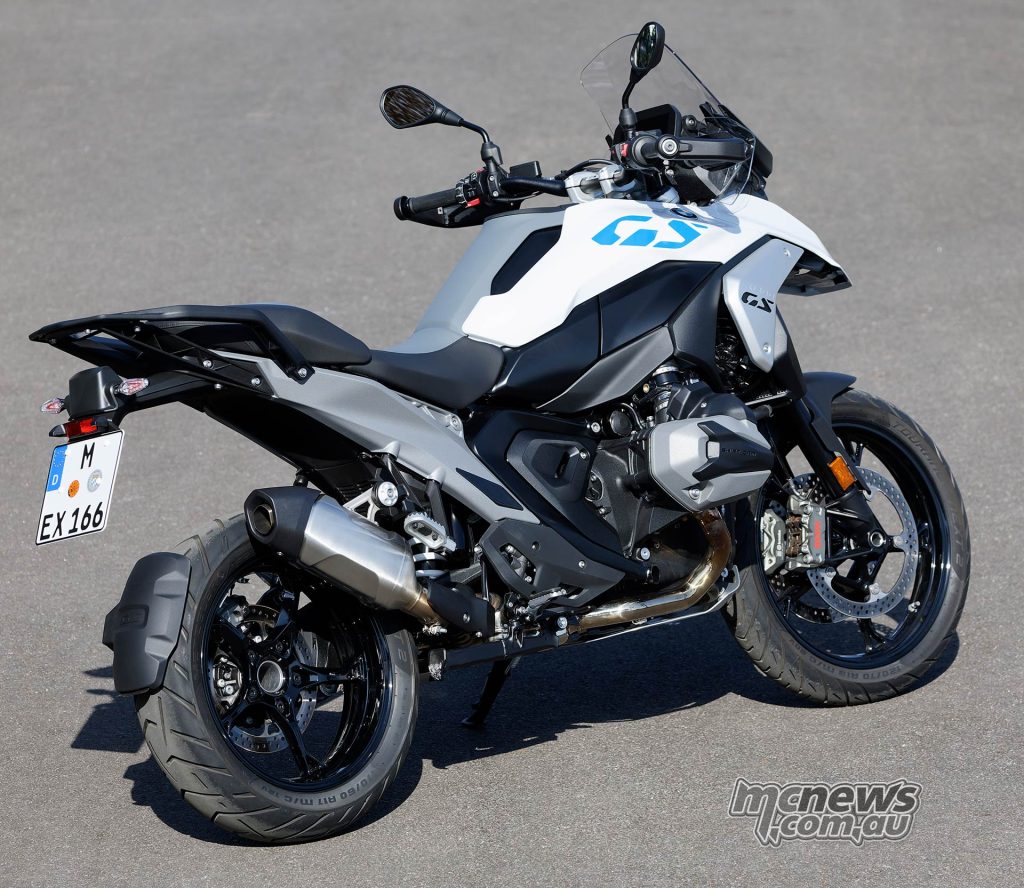
The R 1300 GS is a ground-up, top-to-bottom makeover. Smaller, lighter, more powerful and laden with more tech than ever including a production first of Front Collision Warning (FCW), it’s going to be a polarising bike depending on where your riding loyalties lie.
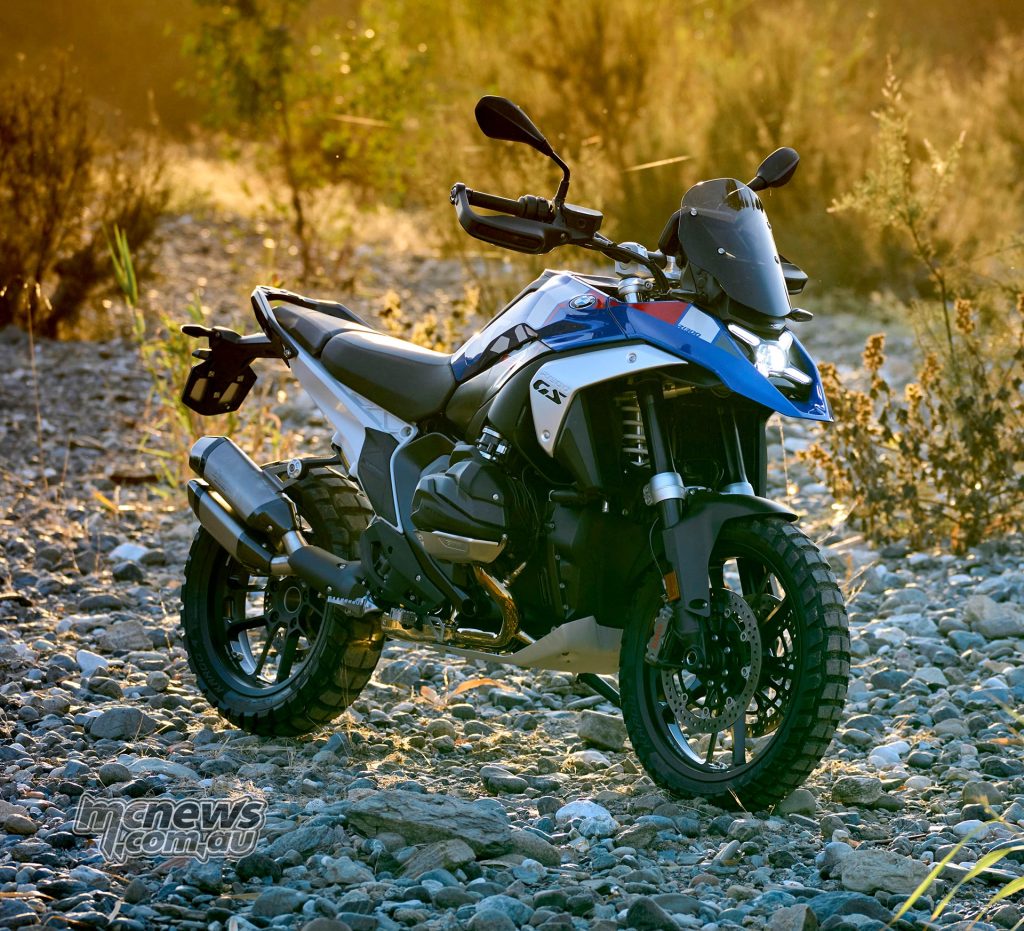
The price of entry starts at $26,000 +ORC for the base model. At the launch we rode this base model for the street section and the $34,590 +ORC GS Trophy off-road. There’s also another two models available with the Triple Black at $34,90 +ORC and the swanky-looking Option 719 at $36,690 +ORC.
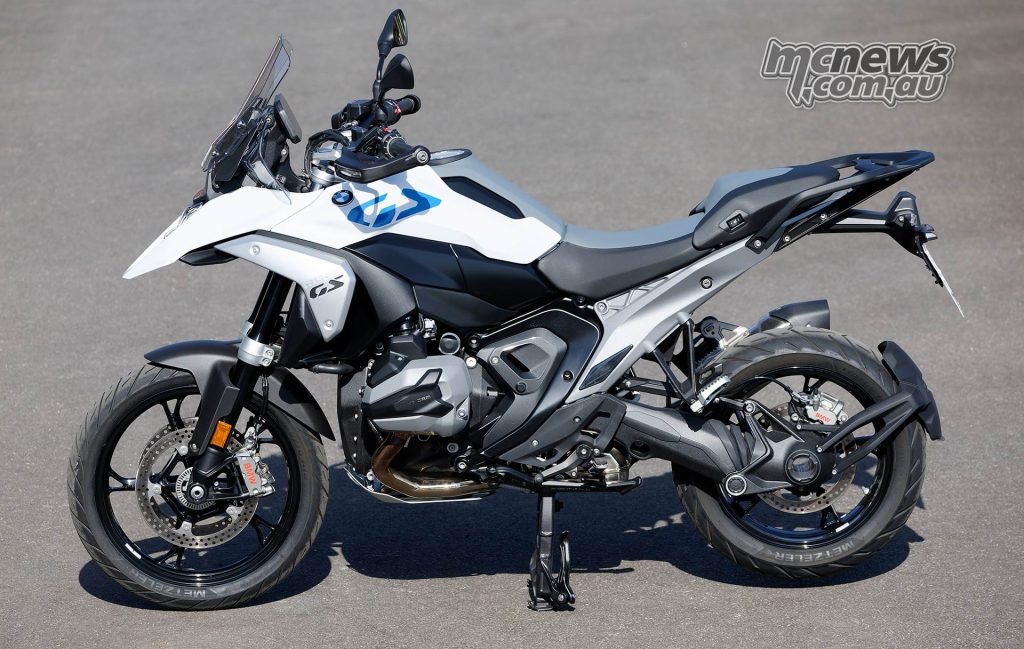
The main difference between our two test bikes were cast aluminium wheels on the base compared to the Trophy’s cross-spoke design; slightly different ergonomics including different foot-pegs, shorter sports screen and tall seat on the Trophy and, of course, the Enduro Pro riding mode found within the optional Riding Modes Pro.
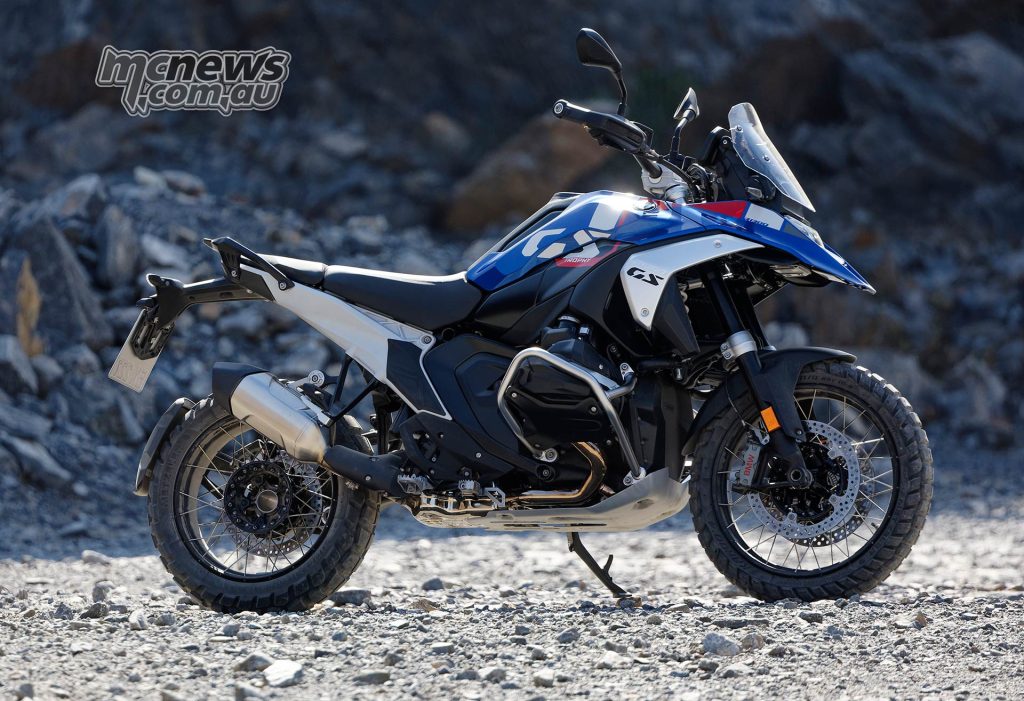
It’s hard to know where to start with the 1300, but here’s a brief rundown of the major talking points of BMW’s 237 kg golden goose.
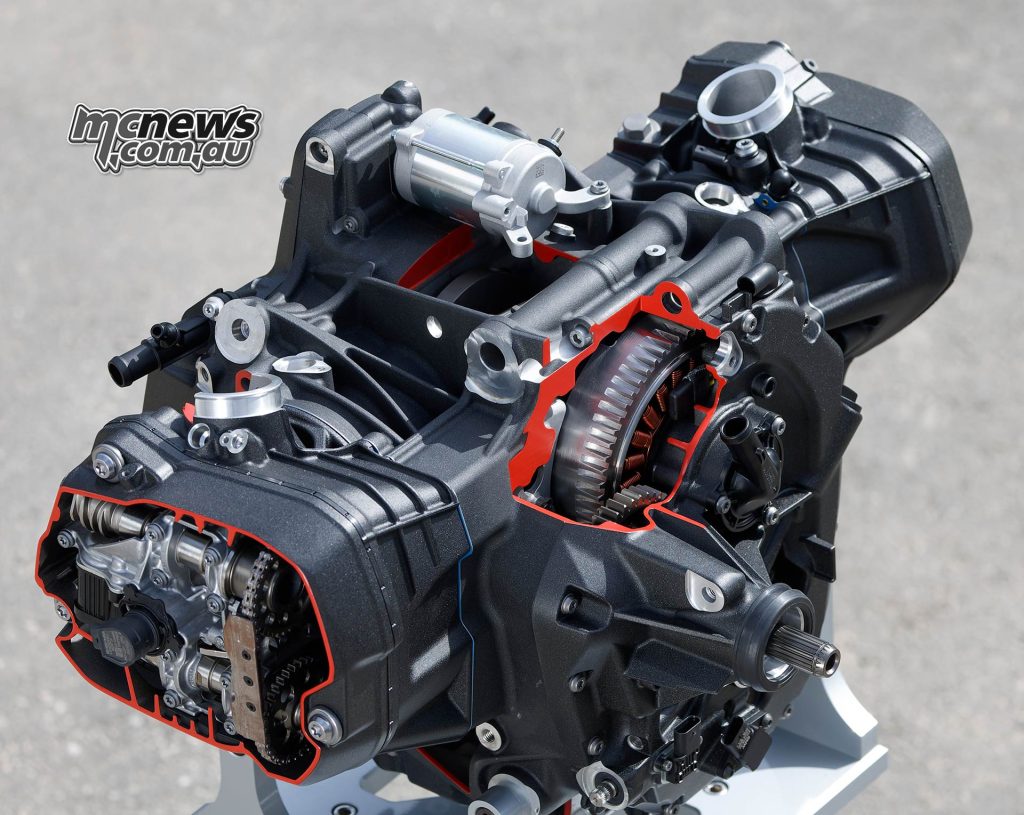
BMW’s brand new boxer is the most powerful flat-twin ever produced by the company.
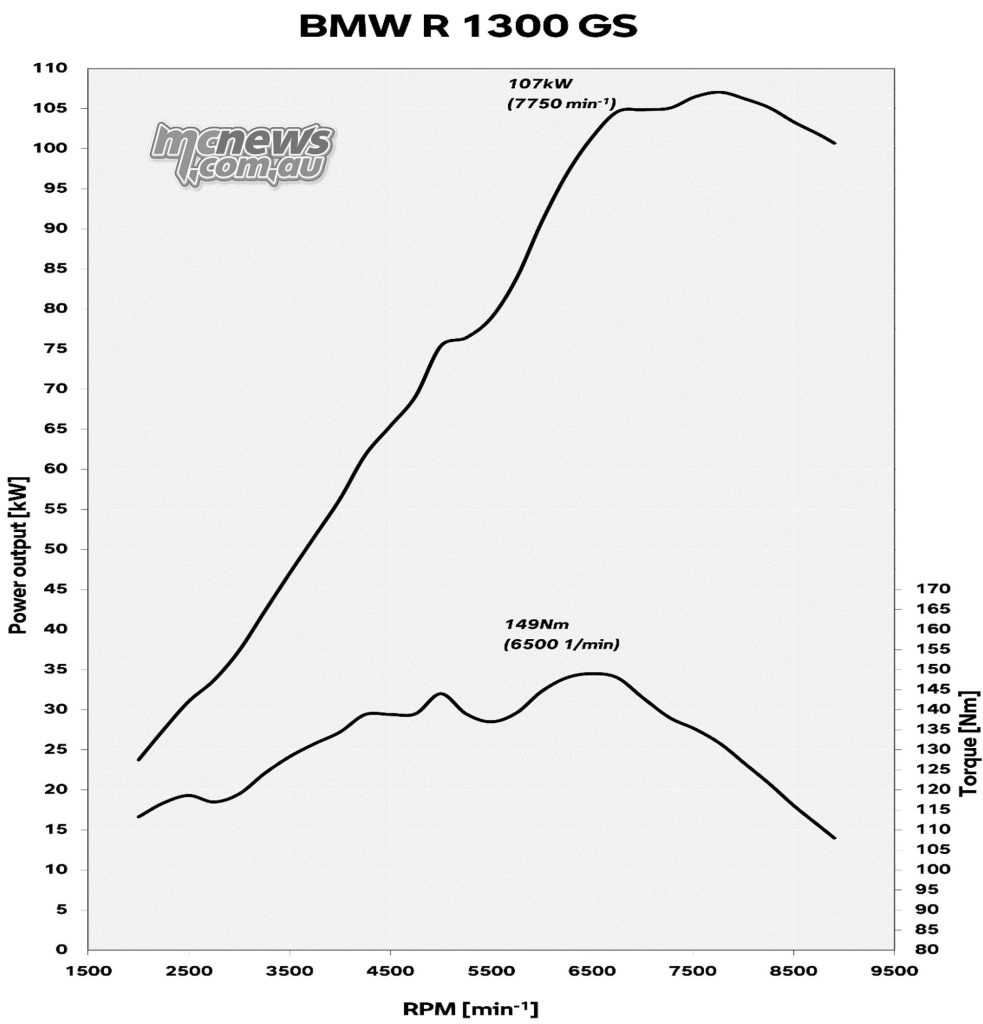
At a claimed 107 kW (145 hp) and 149 Nm (109 lb-ft) of torque, the GS is now starting to creep towards KTM 1290 Super Adventure territory in terms of outright grunt.
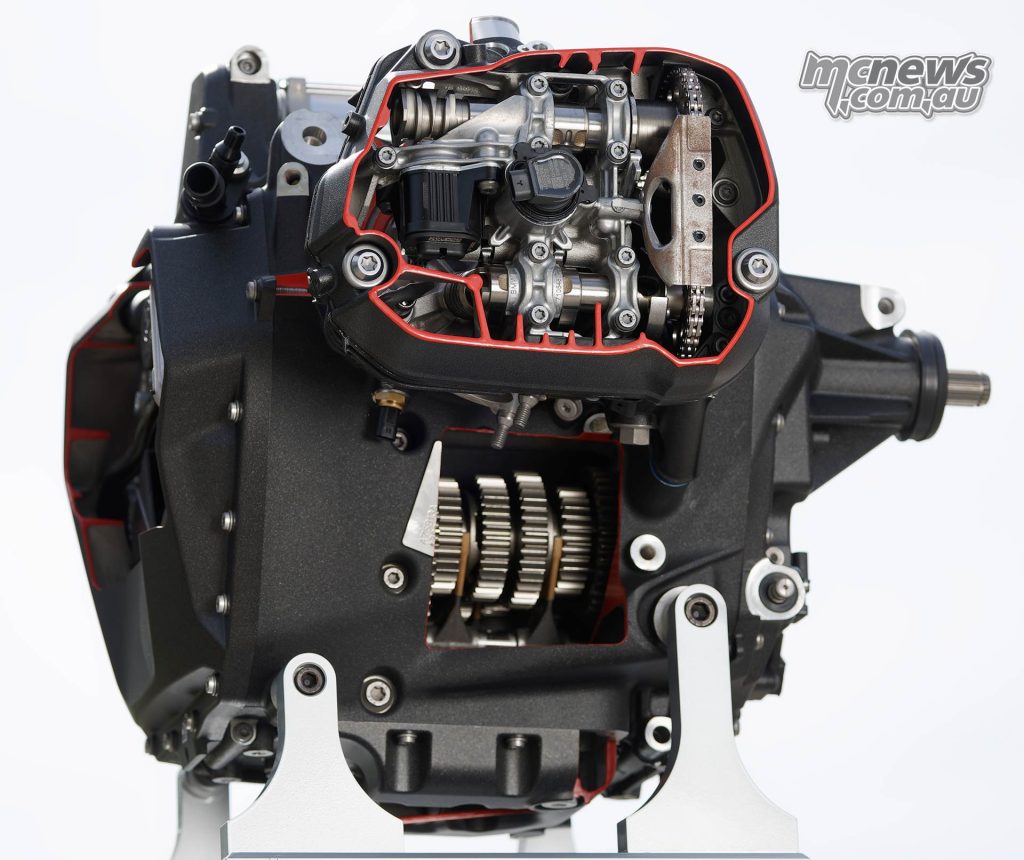
It’s all new. All except for the throttle bodies, which is the only part number carried over in the whole bike from the outgoing 1250. That means new intake, air-box, cams, cylinder head with a handy bump in compression from 12.5:1 to 13.1:1, crank, gearbox, clutch, electronics like fuel injectors—yes, it’s all new.
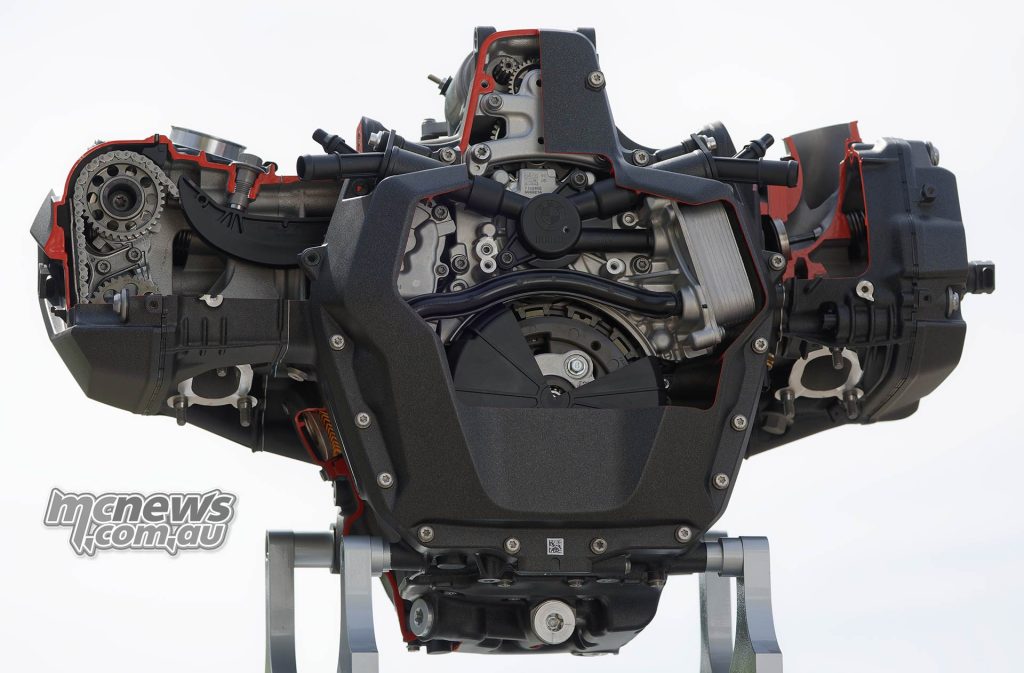
But the biggest—by far—design feature with the 1300 is the fact the gearbox is now stacked under the crankshaft rather than behind it, as per conventional GS wisdom. This new layout has dynamically changed how the GS is put together but not as much as you’d think in how it rides. A more compact motor and transmission layout has enabled the designers to use a longer swing-arm and revised Evo Paralever suspension, as well as dumping a claimed 6.5 kg out of the engine and transmission unit over the 1250.
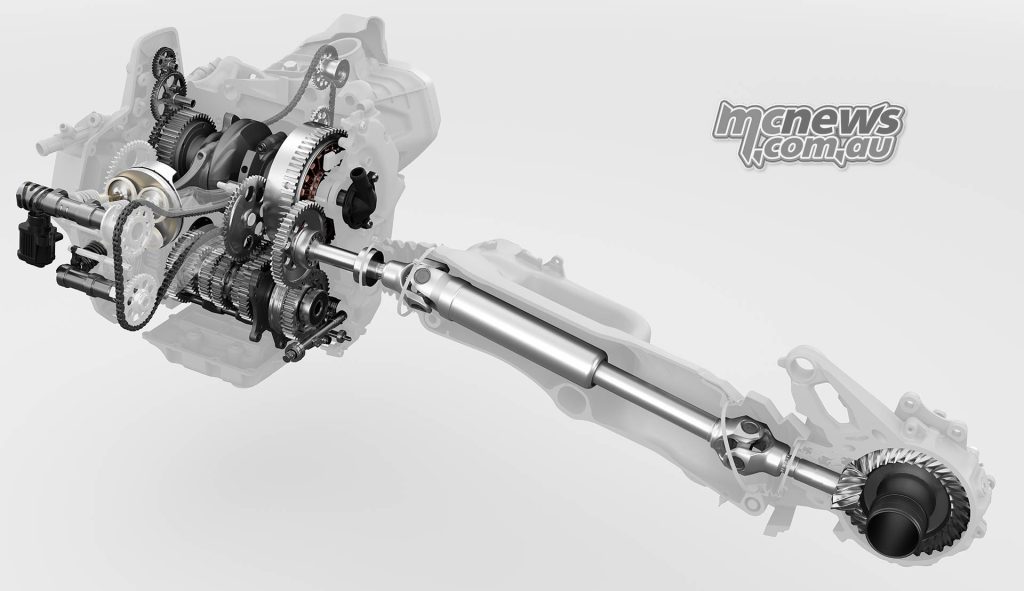
But the GS’s renowned low speed stability across rugged terrain remains unchanged, aided in part by the exceptional Evo Telelever front suspension (more on that in a minute). You’ve got to think of the GS as a sum of all parts bike. It’s a mix of riding modes, their corresponding throttle responses, suspension stiffness or plushness, traction control intervention—it all works together to create an entirely digital riding experience.
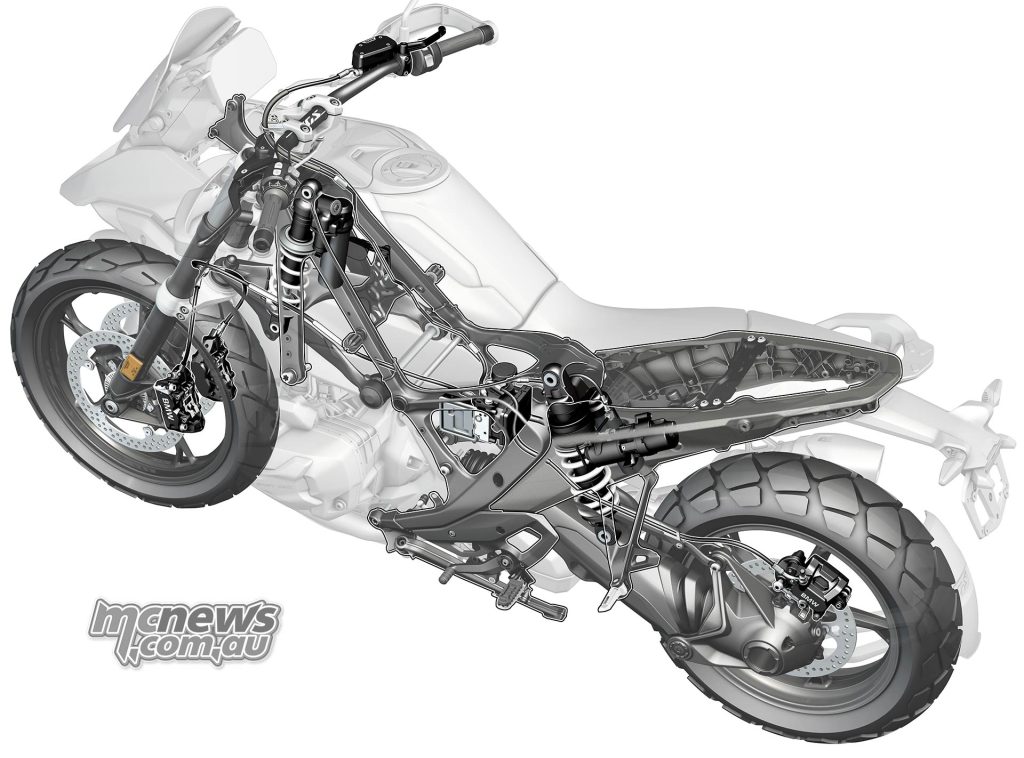
Take all that away, however, look at the bare bones and you’ll see the GS is still a GS. The suspension travel is the same at both ends (front wheel travel is measured at 190 mm while the rear wheel travel comes in at 200 mm), however, the action of the new Evo Telelever makes for the real talking point.
The ergonomics are smaller in every measurable area, with a shorter reach to the handlebar, a similar seat height of 850 mm and a shorter distance from the ’pegs to the seat making for a more compact rider triangle.
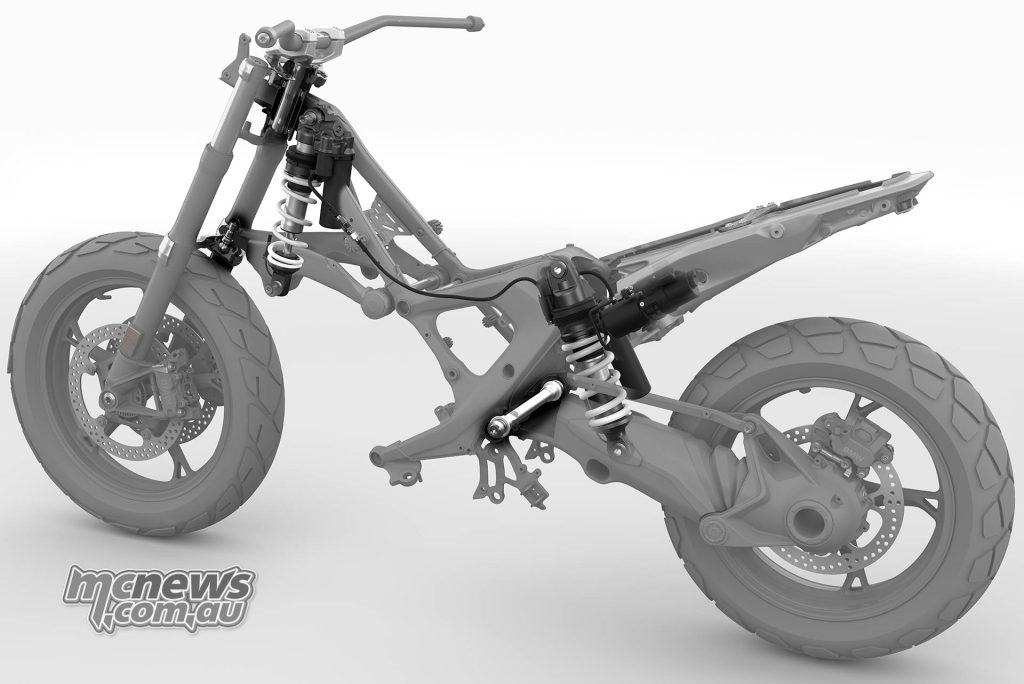
BMW has removed two of the telelever’s ball joints and in place fitted a flex plate that greatly reduces friction as the system moves through its stroke.
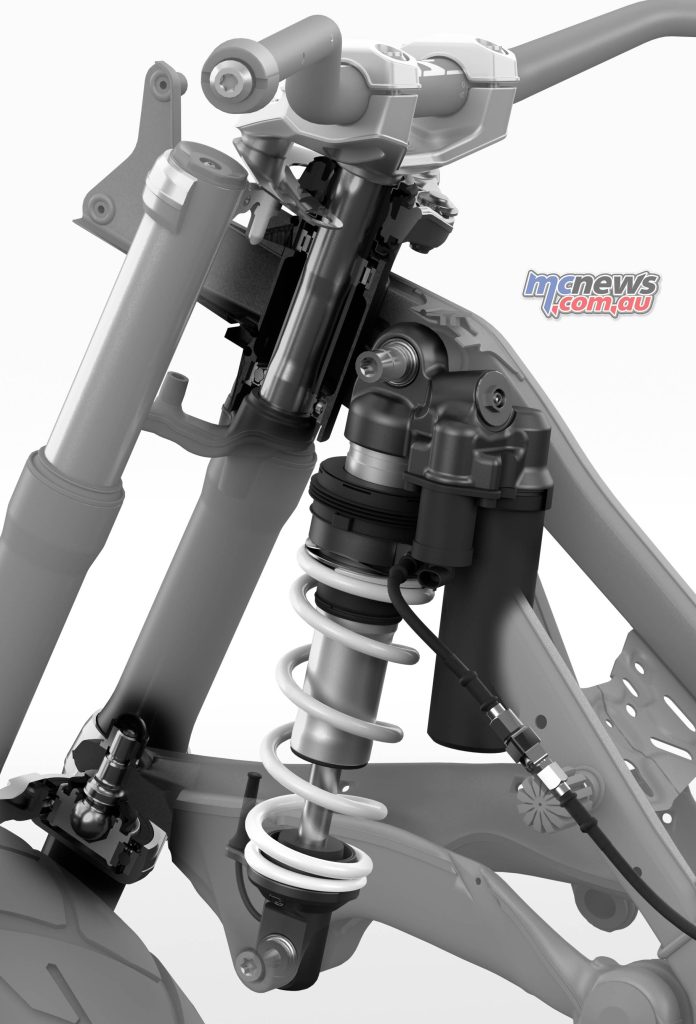
This couples with a redesigned front shock that houses a second spring in the fluid reservoir to offer what BMW classes as the holy grail of suspension design—variable spring rates.
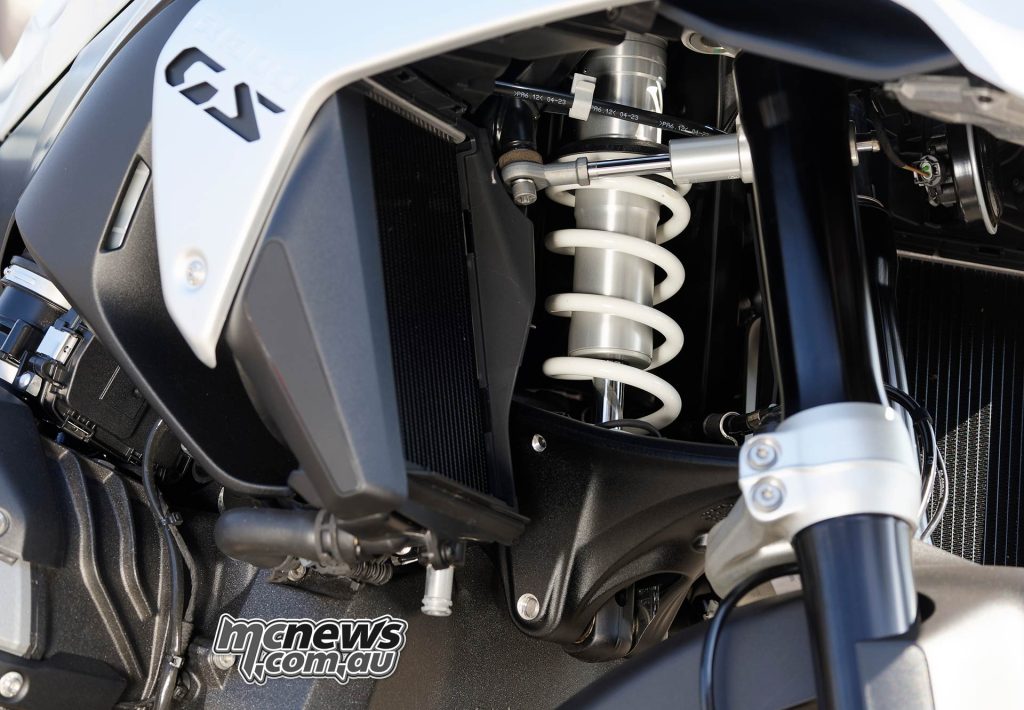
“Before, when you’ve got only one spring rate, it’s always a compromise,” says Christoph Lischka, Head of BMW Motorrad Development. “Now we have two. We have one spring for comfort and one for dynamics. You don’t just switch it between the damping itself anymore, like changing from Road to Dynamic mode. Just changing the damping, you are very limited in what you can do. You cannot do it too much because then the damping doesn’t fit to the spring rate anymore. They must fit together. From a technical standpoint, it’s like a dream for me to be able to change the spring rate.”
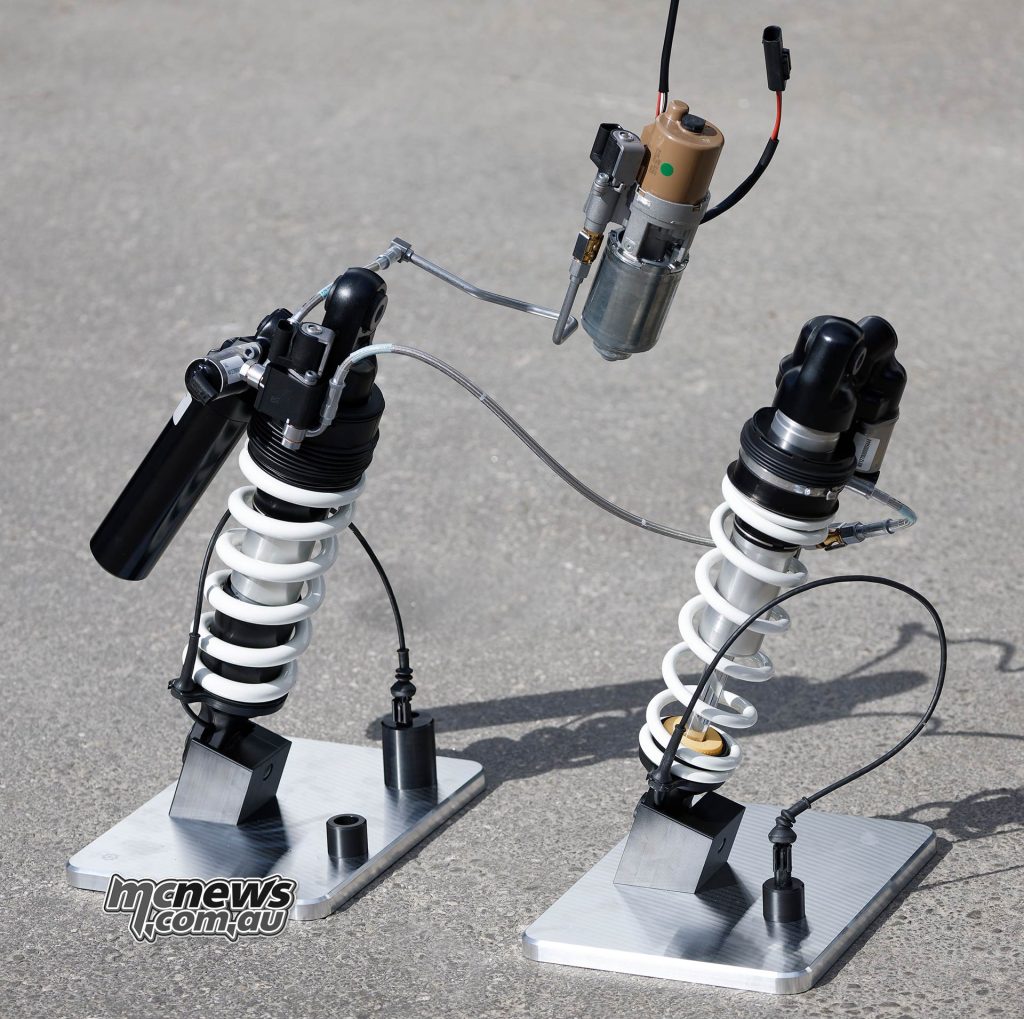
Due to the nature of the new front-end that largely decouples suspension forces from those felt at the handlebar, the initial compression of the Evo Telelever is a fair bit softer than the unit that resided on the 1250.
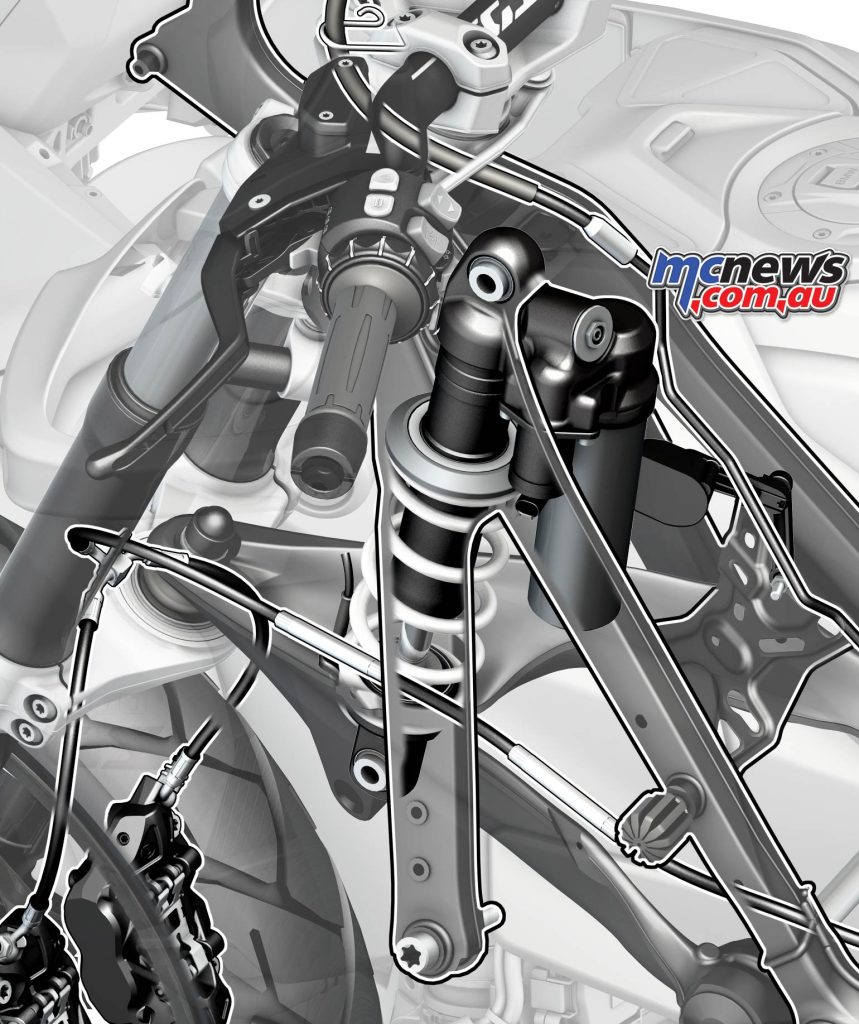
It’s a more controlled compression over dirt roads and the system gives far more confidence to the rider over silty, sandy terrain, where you normally would just hang your arse as far back on the seat as possible and let the front float over the sand.
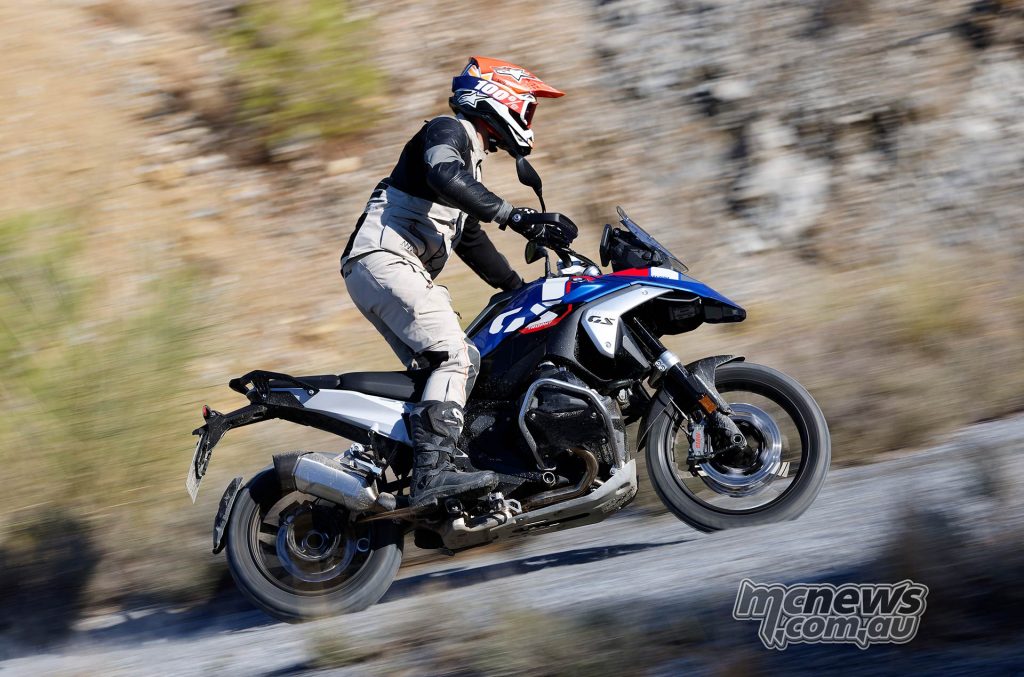
Don’t get me wrong, you still need to adopt this position when on sand, but the 1300’s new front-end is a definite step-up over what we had before.
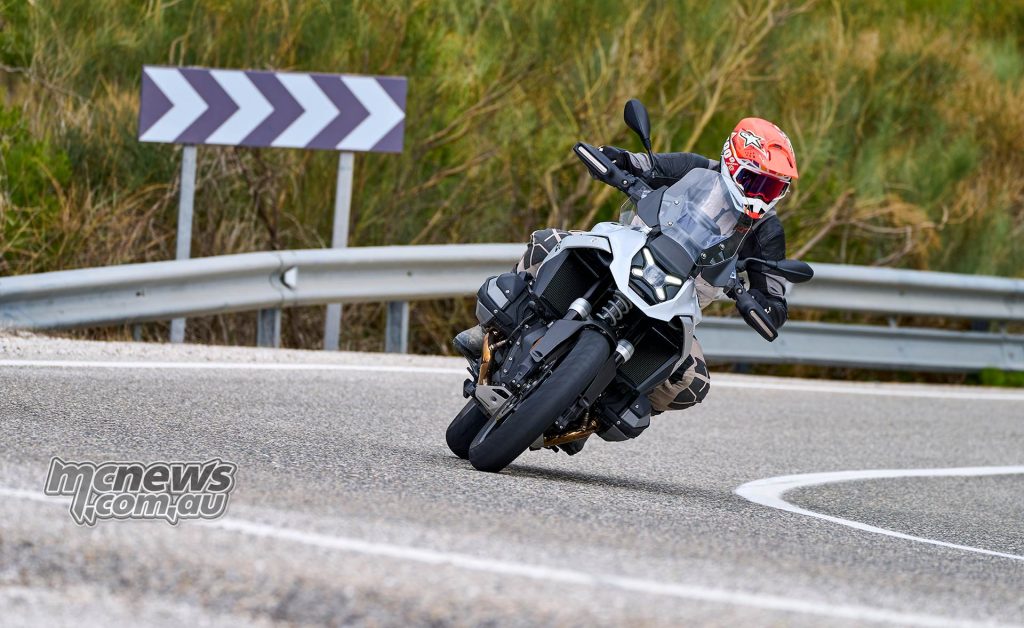
One of the big things BMW wanted to stress at the launch was how much the GS has shrunk, which is largely down to the new pressed sheet metal chassis and cast aluminium sub-frame. The ergonomics are smaller in every measurable area, with a shorter reach to the handlebar, lower seat height of 850 mm and shorter distance from the ’pegs to the seat making for a more compact rider triangle.
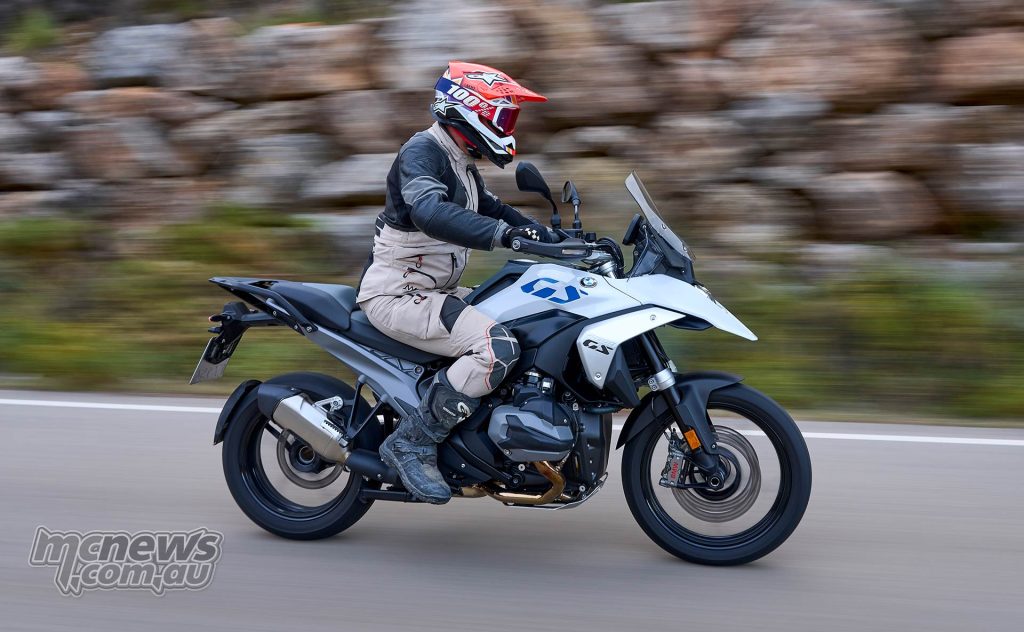
Interestingly, the wheelbase remains unchanged at 1518 mm, a fair bit shorter than something like the KTM 1290 Super Adventure R at 1577 mm, hinting more at the GS’s on road capabilities than when the road gets dirty.
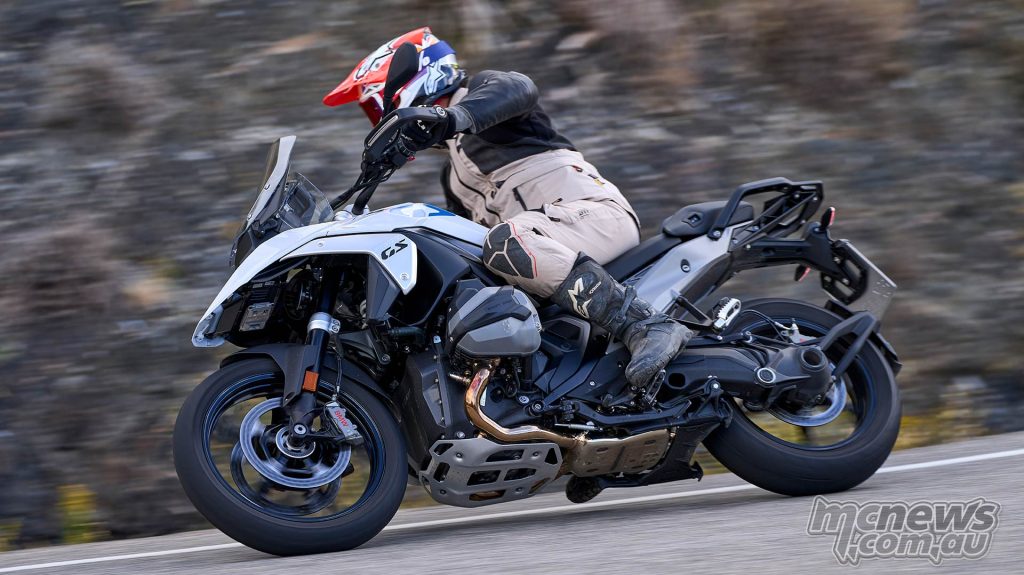
The GS comes with four riding modes as standard (Rain, Road, Enduro and a new Eco mode for maximum fuel efficiency), but if you go deep into the options you’ll likely end up with either the Enduro Pro or Dynamic Pro option, depending on what riding you plan to do.
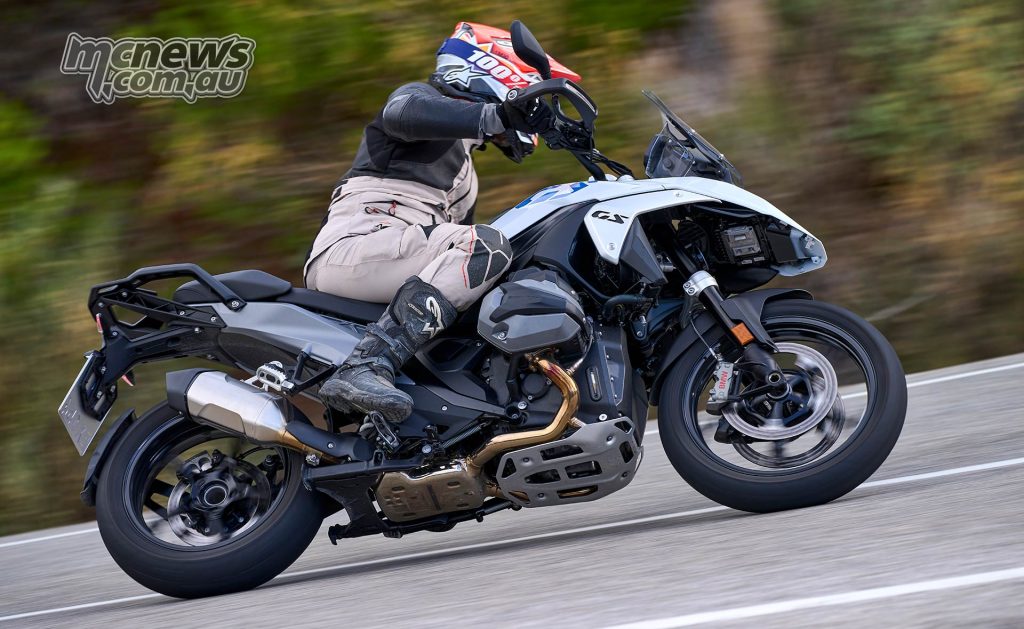
Dynamic Pro hints at the GS’s on road performance. I’ve seen people do some ungodly things on a GS on the street and the new model with its reduced overall size makes it even more of a big supermoto than it was before.
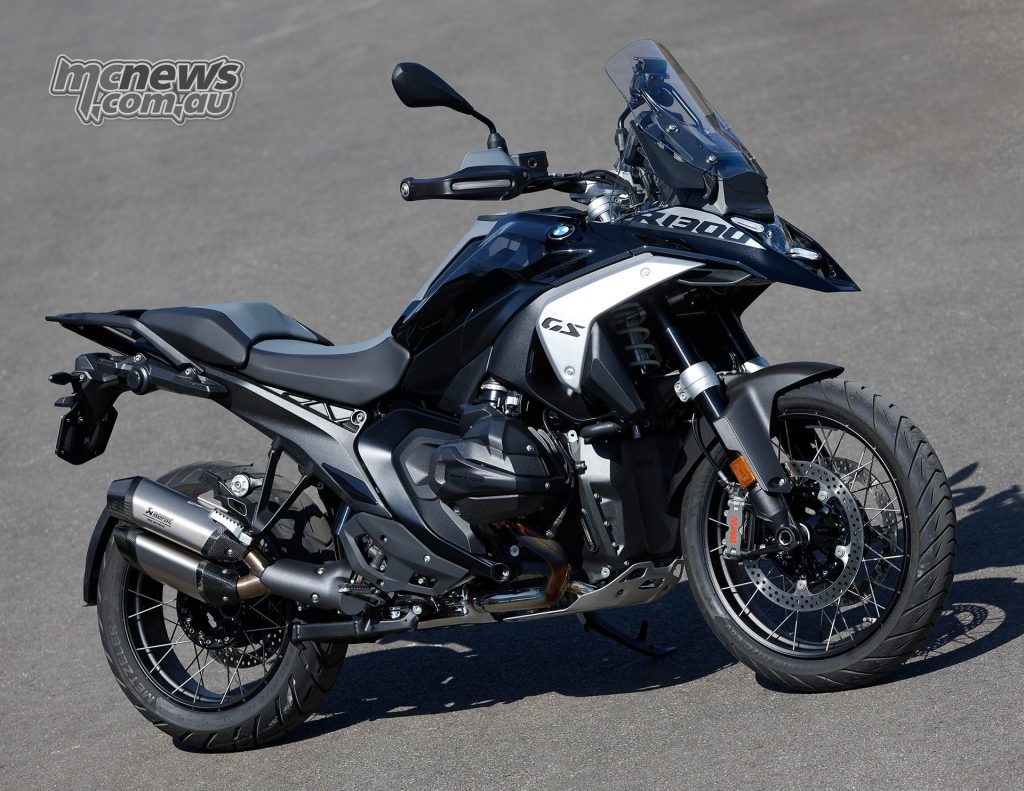
Flick on Dynamic Pro, which will offer the sharpest throttle response as well as the stiffest suspension and you’ll struggle to find a bike that can be ridden faster and at such ease than this GS. At 145 horsepower, you’ve got just about all the power you could ever need and when you switch off traction control (that also includes wheelie control), you’ll be able to pull third gear wheelies with your eyes shut—if you’re into that kind of thing.
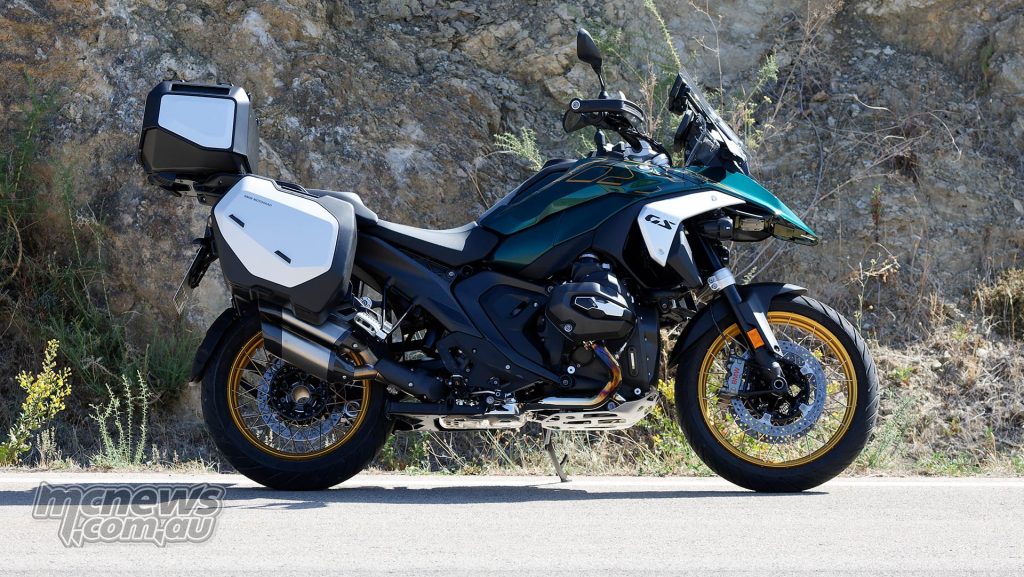
The dimensions given by the shorter motor and longer swing-arm make for supreme stability under acceleration, especially on the street, where you can really make use of all those neddies. Conversely, the 1300 takes less effort to fling from one side of the tyre to the other, a combined benefit of the reduced overall weight, sharper steering and better bump absorption from the Evo Telelever, and tighter overall ergonomics.
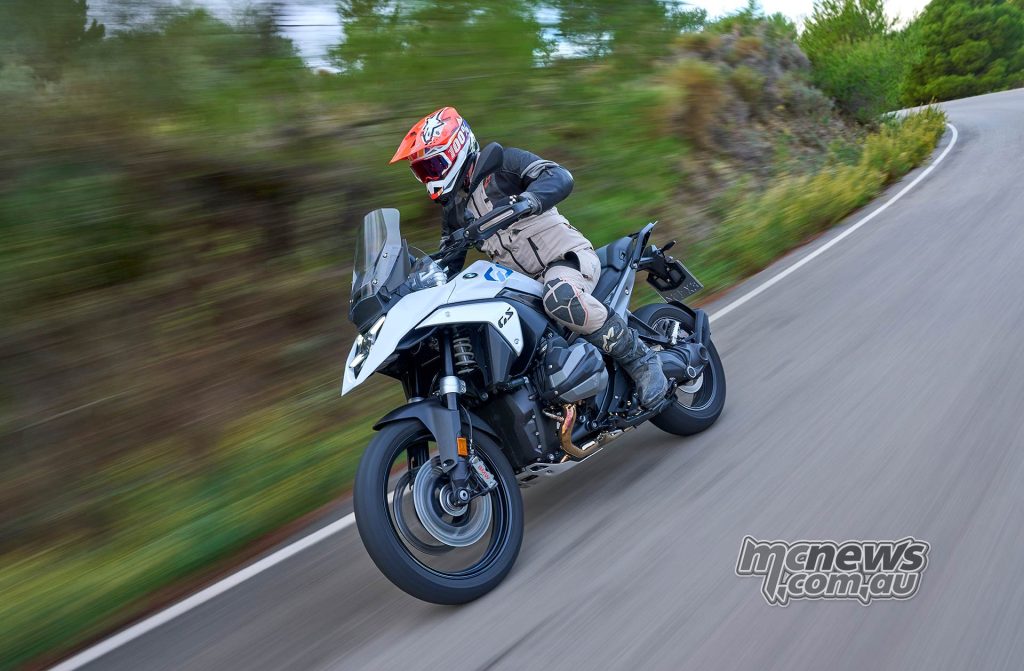
Braking performance is also vastly improved by the Brembo-made (not badged) four-piston radially-mounted calipers. BMW has the relationship between the caliper power and the effort required to get it near spot-on—braking power is excellent but it’s more the feel that’s the standout feature.
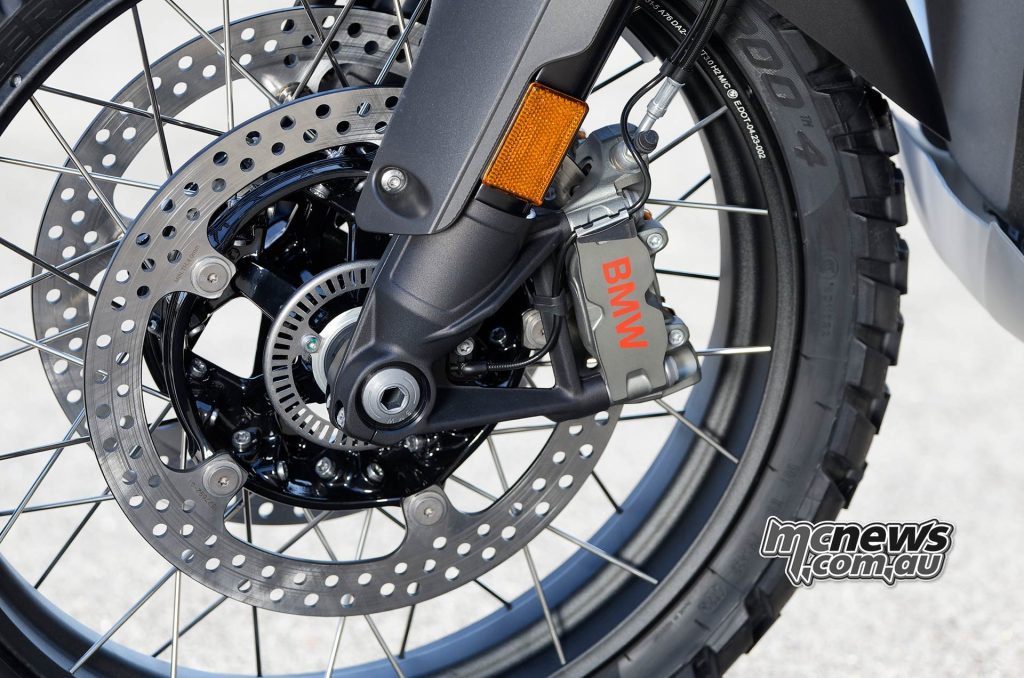
Like so many of the mechanical aspects of the GS, there’s the electronics side that goes with it. Integral ABS Pro activates the front and rear brakes regardless if it’s just the front brake lever that’s pulled. The new system allows for front brake pressure to be applied even if the front lever is never touched and it’s developed for both on and off-road use depending on the riding mode. When off-road, you can lock the rear wheel if you want if in Enduro Pro.
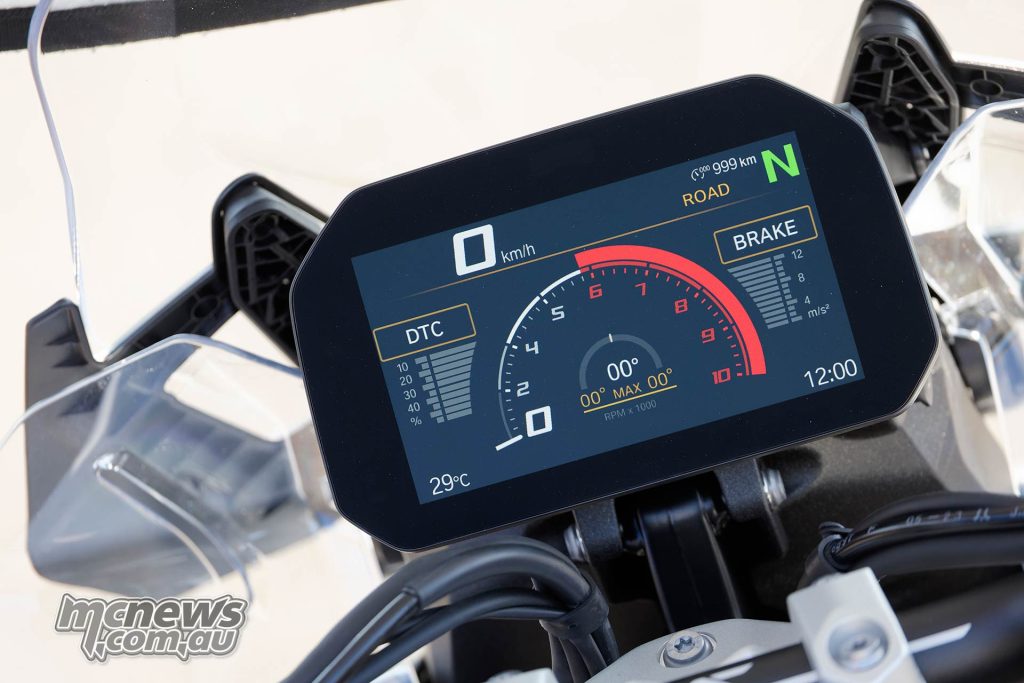
Dynamic Brake Control is different in that it prevents unintentional throttle application when braking. This happens by reducing the reverse torque that gets to the rear wheel, allowing the brakes to do their job better without the rear wheel chattering—this system works in conjunction with Motor Slip Regulation (MSR), a feature that’s been on BMW’s for years where the ECU opens the throttle valves slightly to reduce the back torque that reaches the rear wheel, thus stopping the rear wheel from locking.
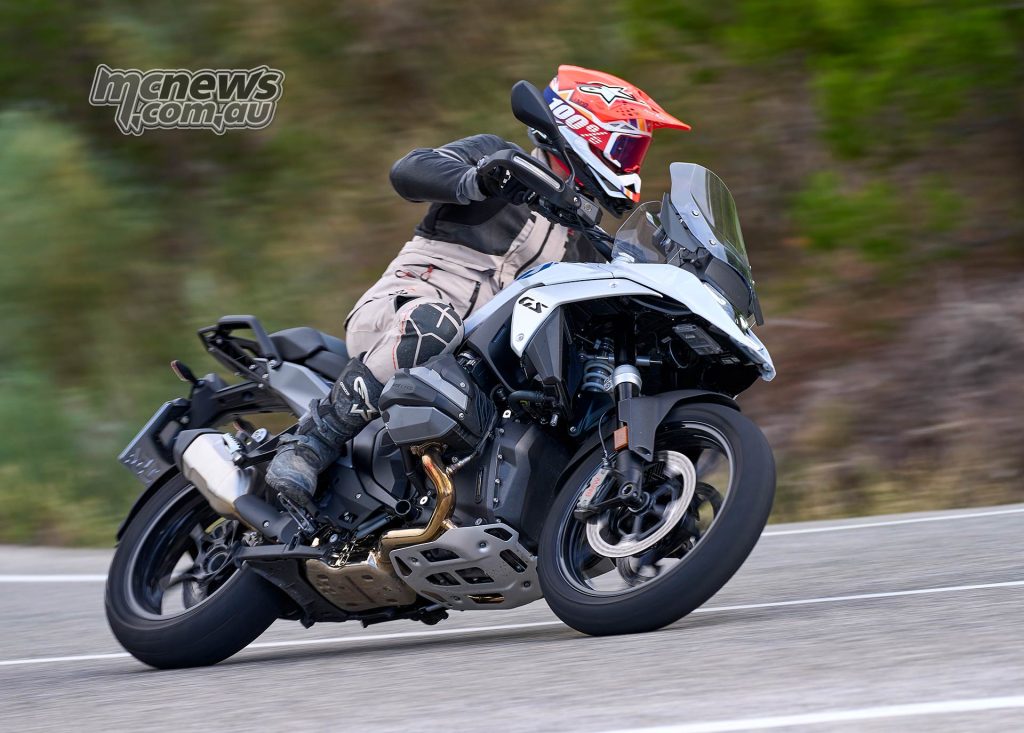
The 1300 has a sportier character compared to the almost over-size nature of the 1250. The smaller screen has the near perfect height for my 183 cm frame to avoid the dreaded wind buffeting and it’s operated from within the dash rather than its own separate function button—as is pretty much everything you want to change, bar the riding modes themselves. Those are done via the mode button on the right handlebar.
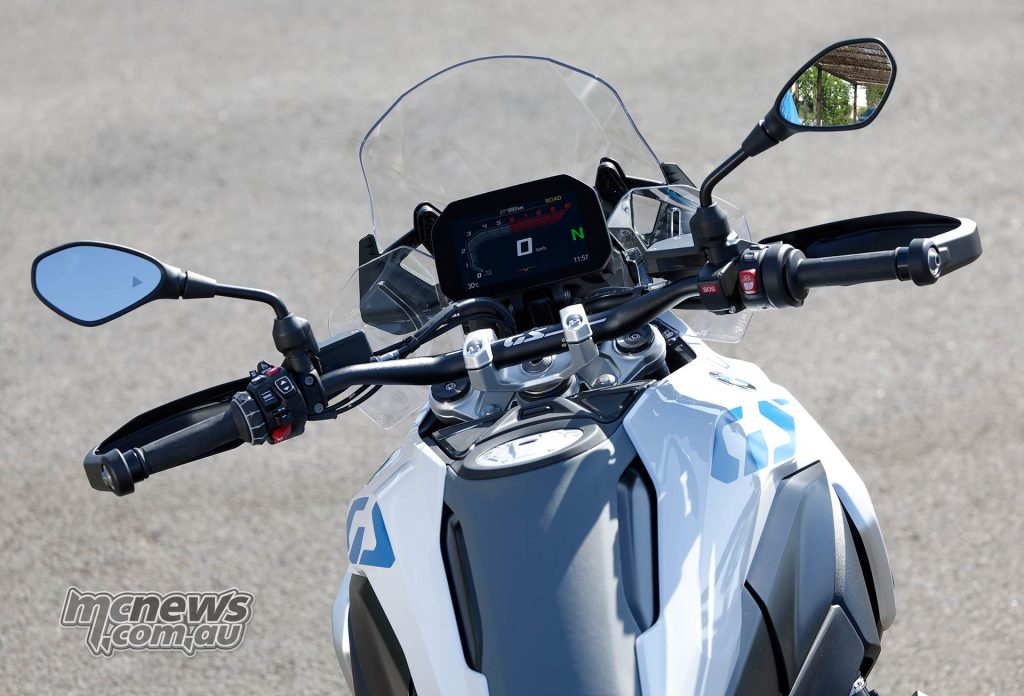
The dash is now essentially the same unit found on the M 1000 R or the S 1000 RR superbike, although you’re now able to have pre-set markers within the dash to change only your favourite things (i.e grip warmers and traction control), without having to wade through the myriad of settings to get to them via the little toggle roller on the left handlebar.
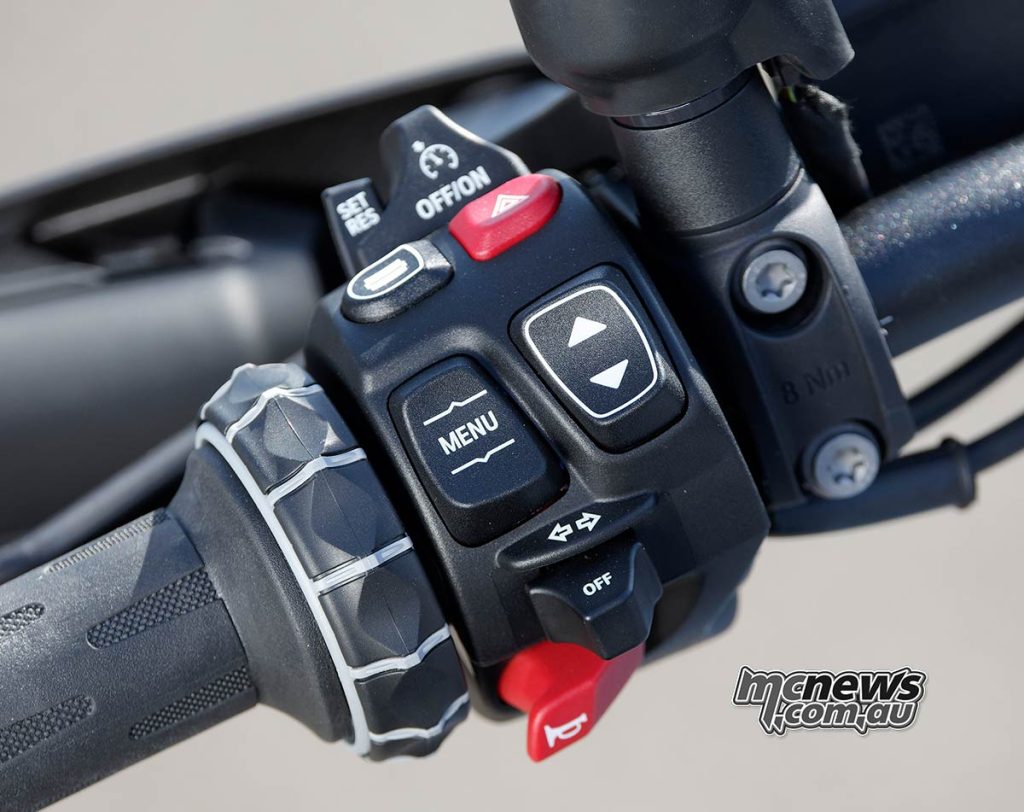
Hidden within this electronic matrix is the new radar-adaptive cruise control, blind spot detection, and Front Collision Warning (FCW) software, the latter a production first, and something I’m happy to say I did not try out.

The FCW works by applying a small amount of front brake if it detects an imminent crash, as well as lighting up the dash to warn you. It won’t save you from impaling yourself on the car in front, but at least the system is looking out for you.
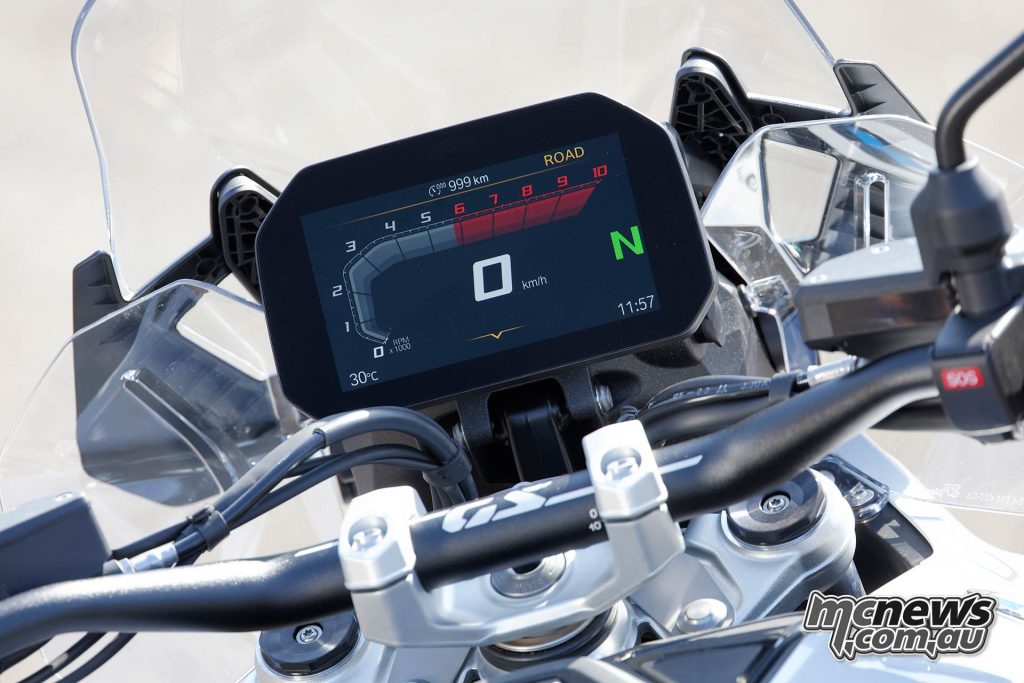
BMW’s got previous experience with the radar-adaptive cruise control and blind spot detection via its R18 Transcontinental cruiser, and the system allows you three pre-set distances to the car in front, speeding the bike up and slowing it down to keep it within that space. There’s nothing much to say on it other than the radar works superbly, even if it does take a degree of control away from the rider.
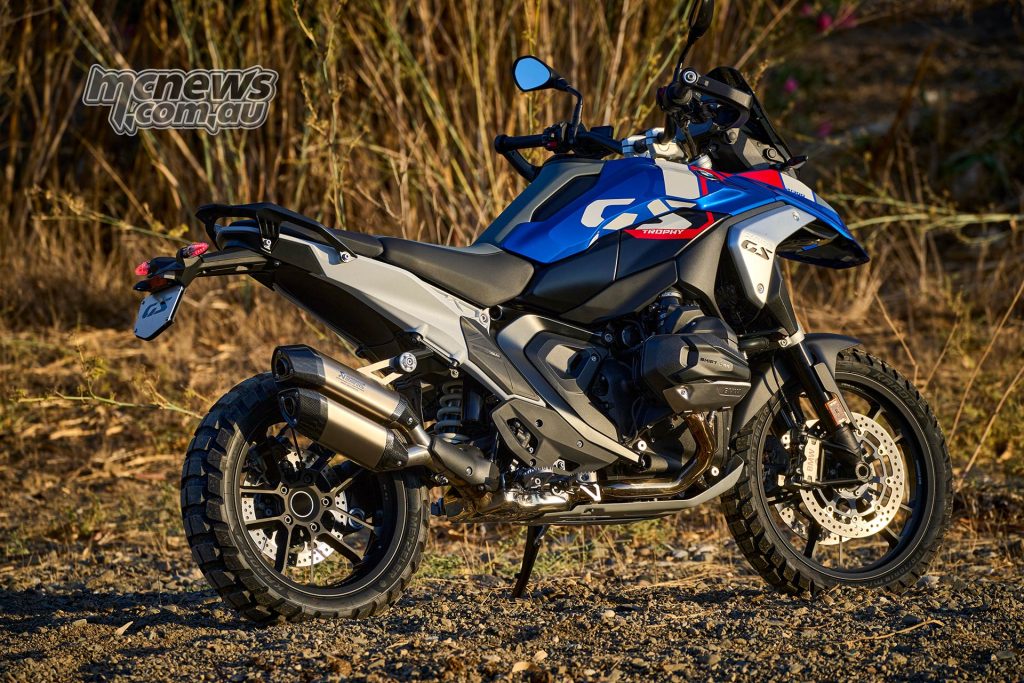
I didn’t ride the GS at night so I can’t comment on the new X-shaped LED headlight but it sure does look good. Pick up the Headlights Pro extra at the dealer and you get the high and low beam all within the one unit. This in itself is a massive change for the GS with its traditionally asymmetrical headlight a thing of the past, the fitment of such a light again contributing to the vastly reduced frontal space of the 1300.
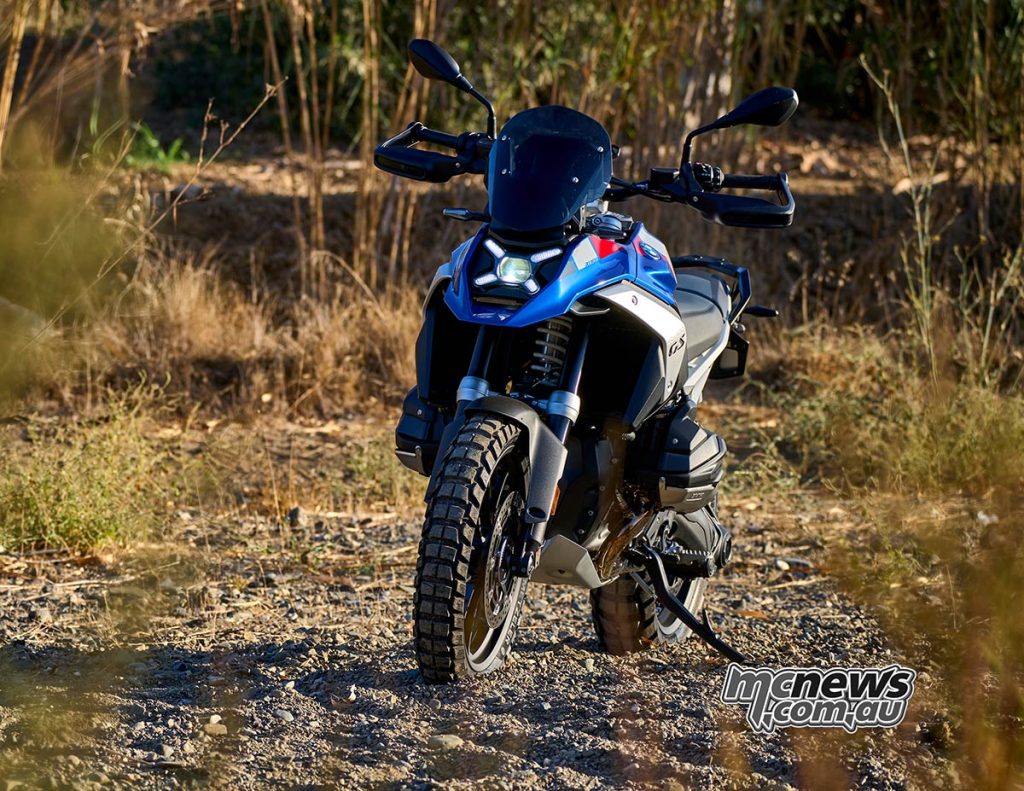
The BMW R 1300 GS represents the biggest shift in the motorcycle in over a decade. I’d argue the new Evo Telelever has made for a better off-road machine but the truth is the entire package has been greatly improved.
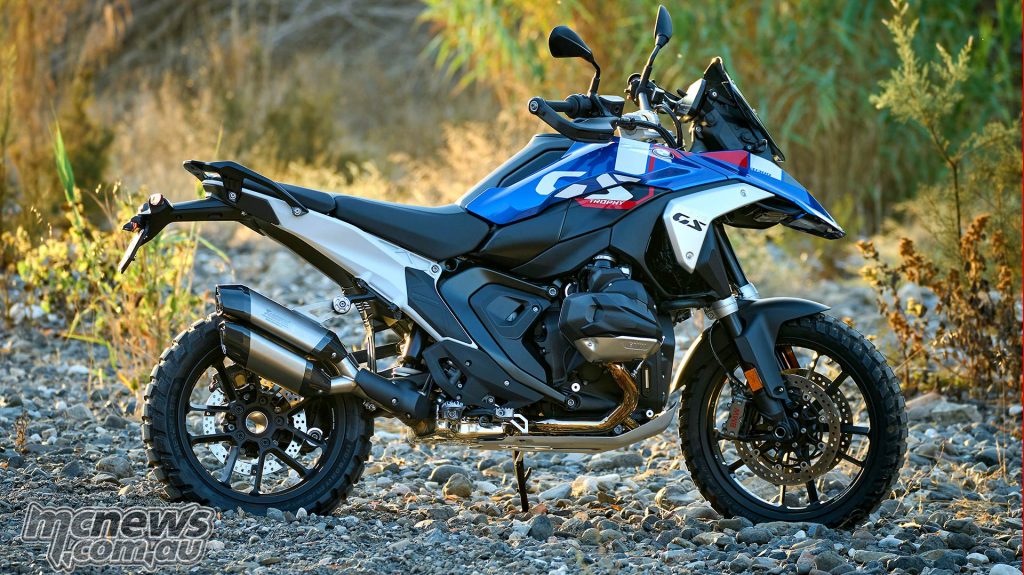
It’s smaller and packaged tighter than ever, and this will no doubt annoy a few out there who enjoy the rangy stance of the 1250. But there’s little doubt the 1300 marks a line in the sand. More digital than ever, it is backed up by hardware changes that improve the ride from a mechanical standpoint.
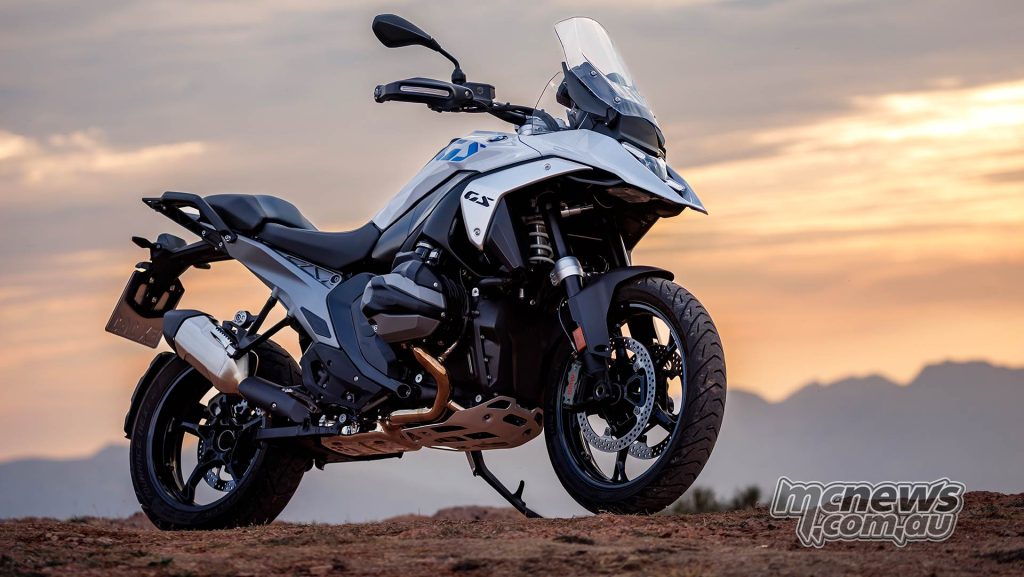
This is an exceptionally good motorcycle, one that’s going to take a heck of a beating from any big adventure bike that dares to challenge it.
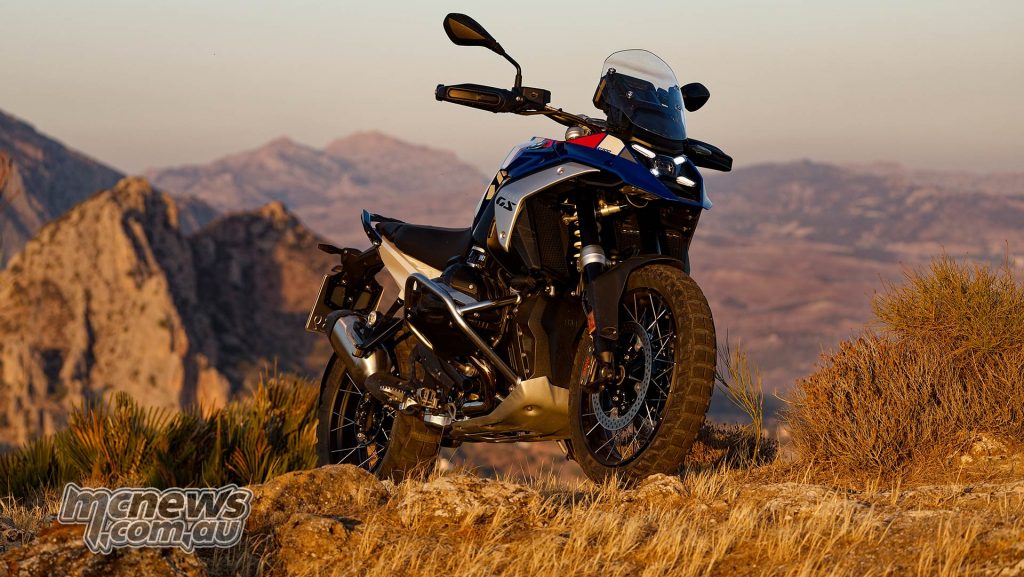
BMW R 1300 GS Specifications
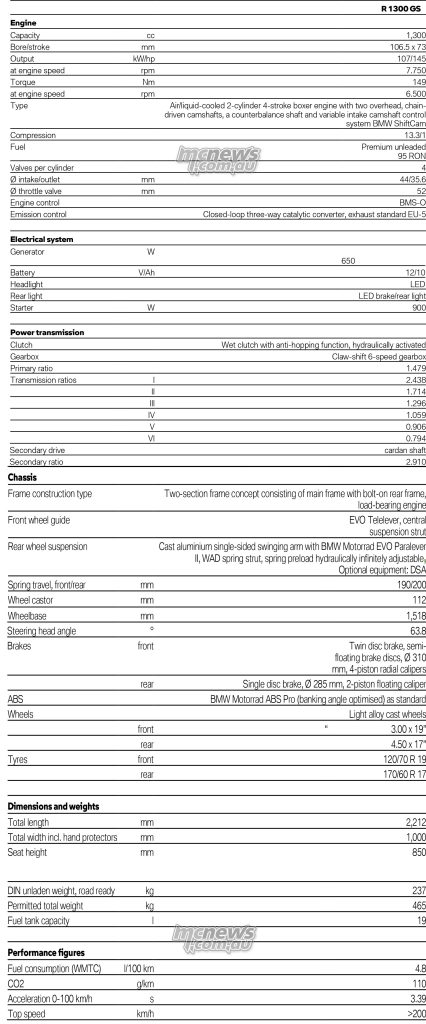
Standard equipment
- 1,300cc 2-cylinder boxer engine with ShiftCam, 13.3:1 compression, EU5, 107kW (145hp) @ 7,750rpm, 149Nm at 6,500rpm
- Cast aluminium wheels
- BMW Motorrad Full Integral ABS Pro, BMW Motorrad EVO Paralever, BMW Motorrad EVO Telelever, Rear Pre-load Adjustable
- Dynamic Brake Control
- Steering Stabiliser
- Tyre Pressure Control
- Rear rebound adjustable
- 12V socket
- Dynamic Brake Light
- Electronic Immobilizer
- TFT with connectivity
- Li-ion Starter Battery
- Dynamic Cruise Control with Brake function
- Matrix LED headlights
- Heated grips
- Comfort LED turn indicators
- LED daytime riding lights
- Riding Modes
- Luggage Rack
- Handbrake/clutch lever adjustable
- Keyless ride
- Hand protection with LED indicator
- Engine skid plate
- Storage compartment with charger
- Adjustable windscreen
- Hill Start Control
- MSR dynamic brake engine control
- Fuel Tank Capacity: 19 litres
- Weight 237kg wet
- WMTC Fuel Consumption 4.8 litres/100km
- Comfort Riders Seat (850mm)
- Comfort Riders Seat High (870mm)
- Comfort Riders Seat Low (830mm)
Variants
R 1300 GS: $26,000*
Light White
Options
- Comfort Package (Passenger Kit, Windscreen Electronically Adjustable, Main Stand) with Comfort Rider’s Seat and Seat Heating: $1035
- Touring Package (Preparation for GPS Device, Chrome-plated header pipe, Central Locking System, Hand protector extension, Case Holder L+R) with Innovations Package (Headlight Pro, Riding Assistant) and Top-case Carrier: $3,310
- Dynamic Package (Dynamic Suspension Adjustment, Gear Shift Assistant Pro, Riding Modes Pro, Sports Brake): $2445
- Enduro Package Pro (Handlebar Risers, Engine Protection bars, Engine Guard Large, Sport Hand Levers Short, Enduro Vario-footrests, Adjustable gearshift lever and foot brake lever, rear frame protection large, Exhaust bracket for single seat, Stalk Turn Indicator front): $910
- Double Silencer: $1420
- LED Additional Fog Lights: $590
- Anti-theft alarm system: $385
- Comfort Handlebars: $150
- Adaptive Vehicle Height Control: $760 (only with Dynamic Package)
- Sport Suspension(+20mm): $530 (only with Dynamic Package)
- Black Cross Spoke Wheels: $695
- Gold Cross Spoke Wheels: $695
- Forged Enduro Wheels: $1370
- Off-road tyres: No cost option
R 1300 GS Pure: $28,990*
Light White
Included as standard
- Dynamic Package (DSA, Gear Shift Assistant Pro, Riding Modes Pro,
Sports Brake) - Preparation for GPS Device
- Black Cross Spoke Wheels
- Riders Seat Height (850mm)
Options
- Gold Cross Spoke Wheels: No cost option
R 1300 GS Trophy: $34,590*
Racing Blue Metallic
Included as standard
- Comfort package (Passenger Kit, Windscreen Electronically Adjustable, Main Stand)
- Touring package (Preparation for GPS Device, Chrome-plated header pipe, Central Locking System, Hand protector extension, Case Holder L+R)
- Innovation package (Headlight Pro, Riding Assistant)
- Dynamic package (DSA, Gear Shift Assistant Pro, Riding Modes Pro, Sports Brake)
- Style GS Trophy (Comfort Rider’s Seat High(870mm)
- Black Cross Spoke Wheels
- Seat Heating, LED additional fog lights, Top-case Carrier
Options
- Enduro Package Pro (Handlebar Risers, Engine Protection bars, Engine Guard Large, Sport Hand Levers Short, Enduro Vario-footrests, Adjustable gearshift lever and foot brake lever, rear frame protection large, Exhaust bracket for single seat, Stalk Turn Indicator front): $910
- Double Silencer: $1420
- Anti-theft alarm system: $385
- Comfort Handlebars: $150
- Adaptive Vehicle Height Control: $760
- Sport Suspension(+20mm): $530
- Gold Cross Spoke Wheels: No cost option
- Forged Enduro Wheels: $760
- Off-road tyres: No cost option
- Comfort Rider’s Seat(850mm): No cost options
- Comfort Rider’s Seat Low(830mm): No cost options
R 1300 GS Trophy X: $33,690*
Racing Blue Metallic
Included as standard
- Dynamic package (DSA, Gear Shift Assistant Pro, Riding Modes Pro, Sports Brake)
- Style GS Trophy (Comfort Rider’s Seat High, 890mm)
- Black Cross Spoke Wheels
Enduro Package Pro
Preparation for GPS Device - Seat Heating
- Sport Suspension
- LED Additional fog lights
- Off-Road Tyres
- Double silencer
Options
- Anti-theft alarm system: $385
- Gold Cross Spoke Wheels: No cost option
- Forged Enduro Wheels: $760
- Comfort Rider’s Seat (870mm): No cost option
- Comfort Rider’s Seat Low(850mm): No cost option
R 1300 GS Triple Black: $34,490*
Black Storm Metallic
Included as standard
- Touring package
- Innovation package
- Dynamic package
- Style Triple Black
- Passenger Kit
- Windscreen Electronically Adjustable
- Main Stand
- Comfort Rider’s Seat
- Seat Heating
- LED additional fog light
- Top-case Carrier
- Black Cross Spoke Wheels
Options
- Enduro Package Pro: $910
- Double Silencer: $1420
- Anti-theft alarm system: $385
- Comfort Handlebars: $150
- Adaptive Vehicle Height Control: $760
- Sport Suspension(+20mm): $530
- Gold Cross Spoke Wheels: No cost option
- Forged Enduro Wheels: $675
- Off-road tyres: $NCO
- Comfort Rider’s Seat Low(830mm): No cost option
- Comfort Rider’s Seat High(870mm): No cost option
R 1300 GS Option 719: $36,690*
Aurelius Green Metallic
Included as standard
- Touring package
- Innovation package
- Dynamic package
- Style Option 719
- Passenger Kit
- Windscreen Electronically Adjustable
- Main Stand
- Comfort Rider’s Seat
- Gold Cross Spoke Wheels
- Option 719 Billet Pack Shadow
- Seat Heating
- LED additional fog light
- Top-case Carrier
Options
- Double Silencer: $1420
- Anti-theft alarm system: $385
- Comfort Handlebars: $150
- Adaptive Vehicle Height Control: $760
- Sport Suspension(+20mm): $530
- Black Cross Spoke Wheels: No cost option
- Forged Enduro Wheels: $760
- Off-road tyres: No cost option
- Comfort Rider’s Seat Low(830mm): No cost option
- Comfort Rider’s Seat High(870mm): No cost option
*Recommended Retail Pricing is shown and includes GST, but excludes on-road costs. Customers are advised to contact their nearest BMW Motorrad dealer for all pricing enquiries.





























































